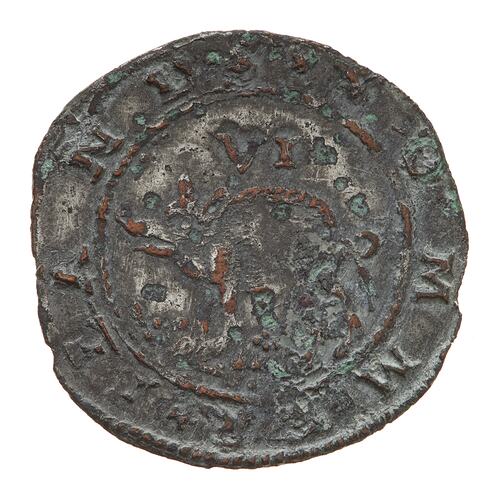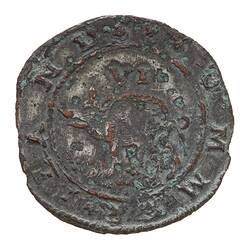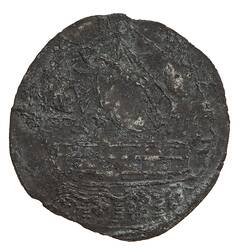Summary
6 Pence, Issued by, Bermuda Somer (Sommer) Islands, 1616.
Hog (Hogge) Money series.
Note:The islands were named by the British after Admiral Somer whose name can be spelled Sommer or Summer. The current name, Bermuda, is after the original discoveror of the islands, the Spanish Captain Juan de Bermudez.
Obverse Description
At centre within a line circle, a hog standing facing left; above, VI; around outside the circle, SOMMER ILANDS
Reverse Description
Within a border of beads, a three-masted vessel under sail to left
Edge Description
Plain
Significance
In 1609, about a century after being first sighted and named after the Spanish Captain Juan de Bermudez, Admiral Sir George Somers, en route to the British settlement of Jamestown, Virginia, was driven South by a storm. His ship, the Sea Venture, although the new flagship of the Virginia Company began to sink and was deliberately driven onto reefs off the coats of Bermuda. British possession of the islands is dated to that event. For a time the islands were known as the Somer Islands. Control was vested in the Virginia Company from 1612 and, when it was found to unprofitable, to a new company called the Somer Island Company from 29 June 1615. That company was authorised to issue its own coinage for the islands and took immediate steps to take advantage of this. Governor Daniel Tucker was supplied with the coinage and instruction for its issue in the payment of weekly wages. He arrived in May 1616 with the coins which had been struck in 'brasse' with a silver wash. The coins feature a hog (spelled hogge at that time) after the wild boars found on the islands (thought to have been left by earlier Spanish and Portuguese explorers). They were known as Hogge Money but were not popular, being of base metal in an era when coins normally contained metal to the value of their denomination. By 1624 their use had ceased.
More Information
-
Collecting Areas
-
Acquisition Information
Transfer from National Gallery of Victoria (NGV), 15 Mar 1976
-
Date Issued
1616 AD
-
Issued By
-
Denomination
-
Series
-
Material
Plated Copper
-
Axis
08
-
Classification
-
Category
-
Discipline
-
Type of item
-
Dimensions
25 mm (Outside Diameter), 1.802 g (Weight)
-
Shape
Round
-
References
Pridmore vol.3 p. 18-21 No.2 Remick p. 64 No.P3 Hocking Vol.1, p. 315 No. 4118 KM#3
[Book] Pridmore, Fred. 1965. The Coins of the British Commonwealth of Nations, Part 3, West Indies.
[Book] Remick, Jerome. 1971. British Commonwealth Coins.
[Book] Hocking, William J. 1906. Catalogue of the Coins, Tokens, Medals, Dies and Seals in the Museum of the Royal Mint.
-
Keywords
Hog Money, British Empire Coins, British Commonwealth and Empire Coins


